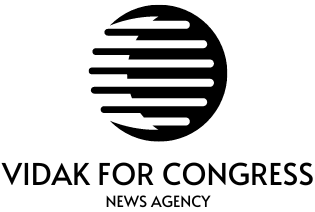Three.JS is a JavaScript library/API that works across browsers and is used to build and animate 3D computer graphics for web browser display. Features like effects, sceneries, cameras, lighting, sky, materials, meshes, shades, animations, and 3D objects are all included in this sort of one JavaScript code.
Read More: three.js code generator
WebGL is a JavaScript API that Three.js utilizes to render dynamic 2D and 3D visuals in web browsers without the need for plugins. Three.js uses WebGL to make seamless 3D animations in your browser, and because it is cross-browser compatible, it offers tremendous power for multi-dimensional objects on the web.
The action script code was first built in 2009 and then transferred to JavaScript.Ricardo Capella launched Three.js in April 2010. Platform autonomy and the need that JavaScript not collect code before each run are Cabello’s two main points of contention.
Branislav Ulicny started using Three.js in 2010. He was the second person to contribute to Three.js, having already published many WebGL samples on his own website. He desired Three.js’s WebGL renderer capabilities to surpass those of SVGRenderer or CanvasRenderer. The main contributions of BrainslavUlicny are often materials, shaders, and post-processing. Joshua Koo joined the team in 2011. In September 2011, shortly after the introduction to WebGL 1.0 on Firefox 4, he created his first Three.js demonstration for 3D text. It was his contribution to the formation of geometric shapes.
Principles of Three.js
EFFECTS
Parallax, anaglyph, and cross-eyed barriers. One filter file called “ShaderSkin” may be created using the effects of Three.js, or I can create my own shader. You may adjust the skin tone of your face to make it appear more natural.
Scenes
Scenes allow you to specify what and where Three.js should render. Placements for items, lighting, and cameras are made here. Run-time object addition and removal; fog. The process of applying photo effects or filters to your entire scene is called post-processing. This can imitate captivating visual effects and change the mood of your environment.
Cameras
Perspective and orthographic; trackball, FPS, path, and other controllers. You may use the combined skin shader effects in Three.js as a result. The orthographic camera and the perspective camera are the two types of cameras that the Three.js library offers. For cameras, we may use an Abstract base class filter. Whenever a new camera is being built, this class should always be genetic.
Motion Pictures Animation
The Three.js animation framework allows you to animate your models’ different characteristics. keyframe, morph, inverse kinematics, forward kinematics, and armoratures.
Making A Mesh
A mesh is the skeleton that forms the figure of a three-dimensional object. A polygonal model is composed of three types of meshes: vertices, edges, and faces. Primitives are geometric meshes, namely spheres, planes, cubes, and cylinders, which are relatively simple objects.Three different designs—API design, Canvas Renderer, and SVGRenderer—can create an effect on a mesh that displays an outline around it.
LIGHTS
Even if we have a lambert material applied, the basic point of light in Three.js would return to a full ambient light. This is because, if you rendered the scene, you would see a red circle of the same hue.
Scaling back
Moreover, we can measure a fixed object. To start, we’ll need a helper variable named t to keep track of the time we forgot. Place it just in front of the render() method.The rendered pixels are altered as the camera is zoomed in or when the item or objects are scaled.
RENDER
In order to do the loop, requestAnimationFrame is the best option. It is the most intelligent method for managing browser animation. Any shader type that requires numerous render passes, such a blur, will produce the desired texture.
Watching Three.js’s Rendering Performance
It gathers data from the Three.js renderer and displays it in real time to track WebGL rendering speed. Recognizing problems with presentation throughout development is highly helpful. It may be found on GitHub and is distributed under an MIT license. For this reason, threex.rendererststs stays at the Three.js level to provide you with several types of renderer figures.
Materials
Materials give items their look. Shaders, which are written in GLSL (OpenGL Shader Language), are more distinct from renders in that they tell the GPU precisely how something should look. Material creates shades for everything that is being drawn. The Three will make lighting and reflection appear extremely intricate.You can build shaders with a fairly flexible setup without having to perform all of these things, however you can still do it with a MeshShaderMaterial.
Properties of Common Objects
Materials and Geometry These are identical and provide additional features. You can control the main characteristics of the materials and meshes using these settings.
As long as the device supports WebGL, you may use Three.js in any way you might use canvas, including full-screen animations. The possibilities that Three.js offers without the need for any 3D knowledge are crucial when we need to quickly develop multi-dimensional applications. In addition to providing enough functionality to enable users to collaborate on projects, Three.js also provides the opportunity to create meaningful hand animations for web applications.
Three.js uses the scene theory to provide a space where geometry, lighting, cameras, and other elements may be placed. Real estate, virtual tours, mapping, remote learning, museums, and other fields may all benefit from the usage of Three.js filters for rendering and animation.
